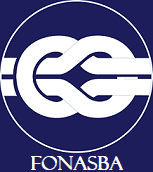Bonaire Bopec Terminal
The BOPEC Terminal is located on the northern part of Bonaire in position 12°13’ North and 68°23’ West. The facilities consist of two “T Head” jetties with shore storage tanks for transshipment of crude oil. Operations commenced on September 17, 1975. Jetty no. 2 was opened on November 27, 1976. Shore facilities handle up to 400,000 barrels of dirty ballast. Up to four tugboats and two line-boats assist with berthing sailing and their use is compulsory. Berthing is usually port-side and Bopec’s gangway is used.
Minimum draft for vessels in ballast
It is compulsory to adhere to the minimum drafts, as noted below. The government pilot can refuse to bring a vessel alongside, when the draft and trim is not sufficient. Maximum trim allowed is 10 feet.
Minimum draft for tankers in ballast entering the harbours of Bonaire.
|
Gross register |
Draft in Feet |
|
Gross register |
Draft in Feet |
|
0-15000 |
11 – 18 |
|
50000-55000 |
18-27 |
|
15000-19000 |
12 – 19 |
|
55000-60000 |
19-28 |
|
19000-25000 |
13 – 20 |
|
60000-65000 |
20-29 |
|
25000-29000 |
14 – 21 |
|
65000-70000 |
21-30 |
|
29000-35000 |
14 – 22 |
|
70000-75000 |
22-31 |
|
35000-40000 |
15 – 23 |
|
75000-80000 |
23-32 |
|
40000-45000 |
16 – 24 |
|
80000- |
24-33 |
|
45000-50000 |
17 – 25 |
|
|
|
Draft may be more, but trim should not exceed 10 feet.
Mooring facilities Jetty No. 1
Berth No. 1 consists of an operating platform 132 feet 10 inches long facing the sea and 94 feet (28.65m) wide toward the shore, with two 24-inch and two 12-inch swivel jointed steel loading arms for the transfer of petroleum products. The waterfront side of the platform is 22 feet 3 inches inside and away from the ship's side.
This jetty is designed for tankers from 30,000 DWT to 50,0000 DWT and the depth alongside is 120 feet and maximum vessel draft 95 feet (28.96m). The largest ship handled to date was "Esso Pacific."
Mooring facilities Jetty No. 2
Berth No.2 consists of a triangle operating platform 49 feet long (14.94m) facing the sea and 42 feet 6 inches (12.95m) wide towards shore, with three 12-inch swivel jointed steel loading arms for the transfer of petroleum products. The waterfront side of the platform is 11 feet 6 inches inside and away from the ship's side.
This jetty is 1760 feet east of jetty no. 1 and was designed for tankers 20,000 DWT to 80,000 DWT but has been upgraded to take tankers up to 135,000 DWT with 30% ballast or partly loaded. Depth alongside is 57 feet and maximum draft is 48 feet (14.63m).
Jetty |
Max. Draft |
Max DWT(MT) |
Cargo Arms |
Side A/side |
Bunkers |
Slops |
F. Water |
|
# 1 |
95 feet (28.96m) |
500,000 |
2x12 inch FWD then 2x16 inch. |
Portside |
No |
Yes (*) |
Yes |
|
# 2 |
49.5 feet (15.0 m) |
135,000 |
2x12 inch FWD then 1x10 inch. |
Portside |
No |
Yes (*) |
Yes |
(*) Slops: may be accepted in terminal’s ballast system provided that same are free of chemicals and paraffin. Subject to inspection/acceptance by terminal on berthing.
Pilotage
Pilotage at Bonaire is compulsory for all vessels and available 24 hours. The pilot and Berthing Master are one and the same. He is a government employee and his services are covered by a government published tariff. The pilot will board the vessel at the established arrival point in latitude 12°12’2” North and longitude 68°26’6” West, which is 3.5 miles 251° true from the jetty.
Deballasting
All ballast water and tank cleaning slops free of chemicals, are to be discharged into the terminal’s ballast receiving system. Permanent ballast in specially designated tanks, not connected to the oil transfer system may be discharged overboard. However for vessels discharging ballast waters in the waters of the island territory of Bonaire, this ballast must be clean oceanic water, devoid of any obvious riverine or coastal influence and must be taken at least 12 miles offshore. (Note: Pilot will present to Master a ballast water declaration to be signed prior berthing).







